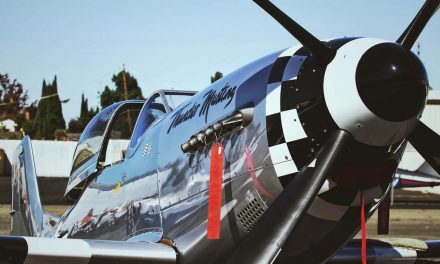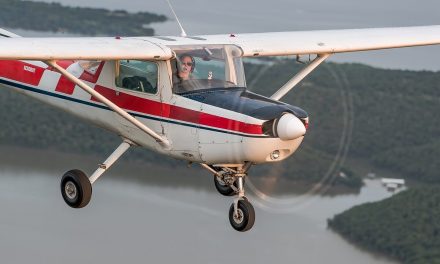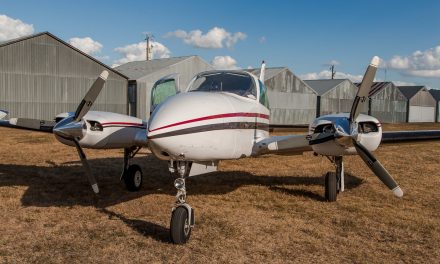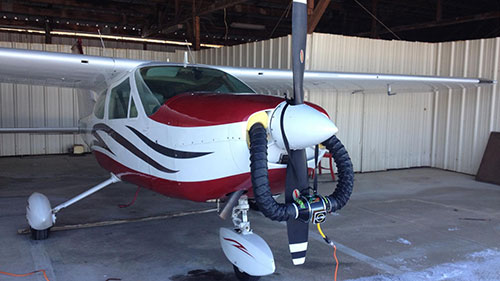In anticipation of his upcoming book My Sky: The Flights & Times of Bill Cox, we talked to Bill about the book and some of his most memorable moments from his career.
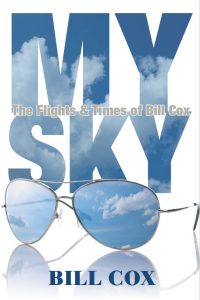
Learn about My Sky at https://cessnaowner.org/bill-cox-book/
Read the transcript of this interview below
In your own words, describe what My Sky is and what people can expect when they read it.
My Sky is a collection of stories associated with my travels over the last 40-45 years delivering airplanes around the world. Primarily Europe but also South Africa and Australia and Japan. There’s not a lot of gee-whiz in it other than a few engine failures — 13 engine failures. Only one of which has also been a wrecked airplane. And that was in Ethiopia in Africa. But other than that, mostly it’s reflections on some of the problems and the rewards of flying general aviation, primarily piston but some turboprops and one or two jets, across oceans to the other side of the big pond — either the Atlantic or the Pacific.
Is there a particular story from the book or from your career in general that sticks out as most memorable or as your favorite?
One that some people don’t quite believe. I took the first production Cessna Crusader. Picked it up in Wichita in 1983 and took it down to Florida, got it tanked and then took it across the Atlantic. It was headed for Johannesburg, South Africa to the Cessna distributor down there. And when I got to a little place called Tchibanga, Gabon, which many people believe it is a name I made up because it was in Africa, in any event. I had a double engine failure and allegedly that’s almost not possible. It’s one of the reasons people buy airplanes with two engines. But in this case, we had fuel contamination in the ferry tanks. And, unfortunately, there’s no way to check for that. Usually we have quick drains, as you probably know, in the wing tanks, but in this case, the customer usually doesn’t take too kindly to drilling a hole in the belly of his airplane so you can install a quick drain. So, typically we don’t have any way to make sure that there is no material of any kind. Typically portions of a clot filter. Many overseas locations filter the fuel before it goes into the hose to be dispensed into the airplane. And unfortunately the clot filter has to be changed and a lot of locations overseas they don’t seem to worry about that. And that was exactly the case here. And I got a big glop of this that went through the Y valve on the ferry system, which meant part of it was dispensed to one tank and part of it was dispensed to the other and both engines filed simultaneously over Tchibanga, Gabon, just north of the Congo River. So, the airplane went down. Fortunately for me I was flying with another guy and he pointed out to me — because he’d been along this route before this was my first trip to Africa — he pointed out to me a little grass missionary emergency strip, which they typically use in Africa to have missionaries or medical teams go in when there’s either some kind of a really bad injury associated with an animal attack or snake bite or something like that. And this was a little, short runway and miraculously not because I was so skilled but miraculously because I didn’t know what I was doing I landed the airplane on that little tiny strip and there was no damage to the airplane. And then we got rescued the following day. In any event that was the extreme example of the kind of things that can happen to you. Most commonly people will ask if I ever went in the water. Fortunately, thank God, I never have.
Are there any special memories or particular airplanes, particular flights from your career that you didn’t include in the book that you didn’t tell the story?
Oh yeah, there’s all kinds of things that have happened over the years. As you’re aware, I think we have 25 chapters there and a lot of those were based on a particular trip. Others were a conglomeration of four or five trips that had similar conditions. Similar weather such as icing that sort of thing. There were many, many other trips that I didn’t have room to elaborate about. But if we do Volume 2, if we ever do Volume 2 maybe I can get those into print as well.
You’ve had obviously a very long prolific career as a pilot, do you have any advice for anyone who is an aspiring professional pilot either ferrying or anything along those lines?
Well there’s one big thing and that is — it’s a very simple thing — but it’s called checklists. Some people especially when they get to a fairly advanced stage, and I guess you could say I’m there because I got 15,000 hours and I’ve been flying about 65 years. If you get in the habit of neglecting checklists, it’s almost guaranteed to bite you in the butt. Because there are many, many things that seem insignificant that can suddenly be significant especially when you have no options. And that’s one of the big differences between the kind of flying that I’ve done quite a bit of. About 10,000 of my hours have been in ferry flights, but if you have a problem and you’re out over the Atlantic Ocean and there’s no land within a thousand miles, you have a real problem. It can become very serious very fast because you don’t have any options. All you can do is get out a May Day and do the best you can on ditching the airplane. Fortunately, that’s never happened to me. The other problem associated with that is if you do go down in the ocean, the chances are really good that no ones ever going to know what happened to you because you just ditch the airplane and the airplane goes down and takes you with it. In any event, checklists are really important, and I use them religiously after having a few experiences in which I didn’t. Fortunately, none of those experiences caused anything more than just a few moments of terror. Checklists — I insist on in any kind of airplane. If it’s a J-3 Cub or a 421 or a Cheyenne or some other kind of a turboprop, I use checklists all the time.
Good advice. Is there anything else that you want to say about your career about your experiences or about the book specifically?
I can sum it all up in the book that this is something I’ve wanted to do for a long time. I’ve been working on this off and on. That’s of course one of the problems is trying to make a living as a writer and then in your spare time what do you do but you write. So, it can be very frustrating because it seems like you’re always writing either on your proposed book or on the story that you put out on a monthly basis for one or another of American aviation magazines or international. I’ve written for aviation magazines all over Europe and South Africa and Australia and various other places. In any event, one of the things that really necessary if you’re gonna do a book, and I’m really happy that I had this opportunity to do one, is that you can still make a semblance of a living and still get something done on the book. So, if we do Volume 2, I’ll really be happy. I hope that Volume 1 succeeds at least enough that we can do a Volume 2.



